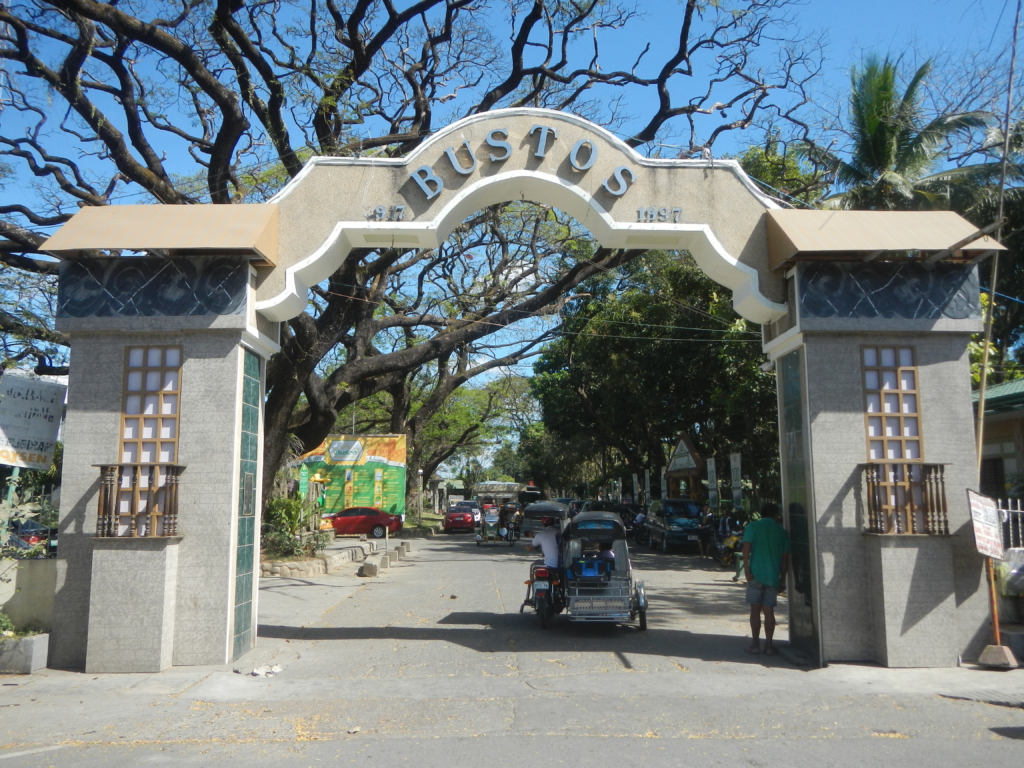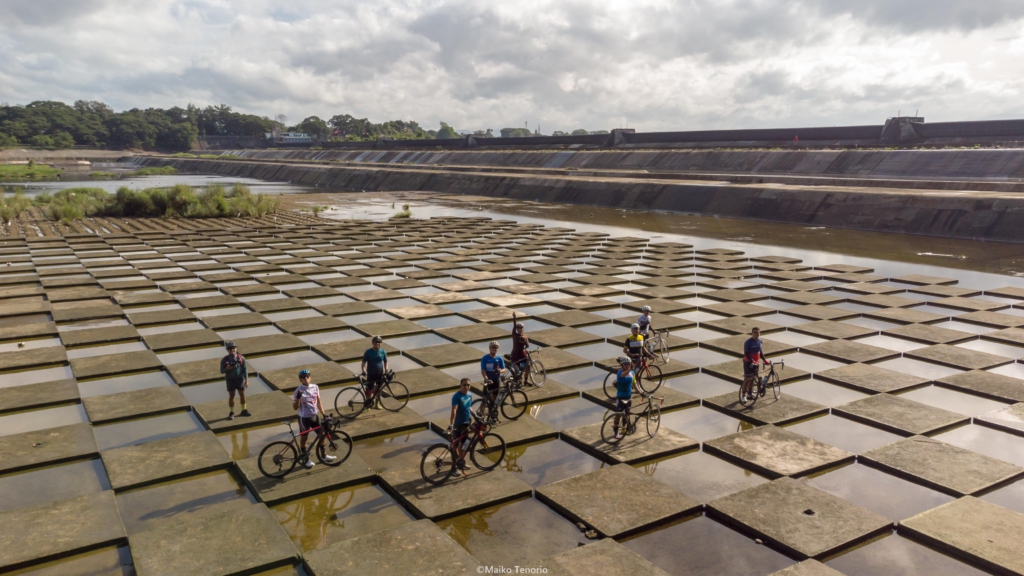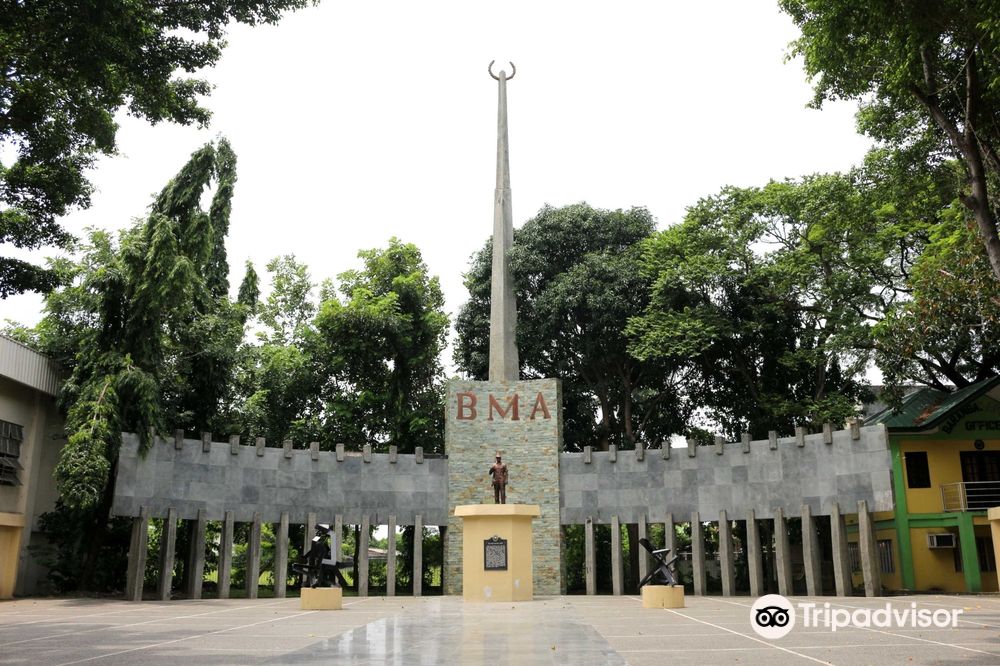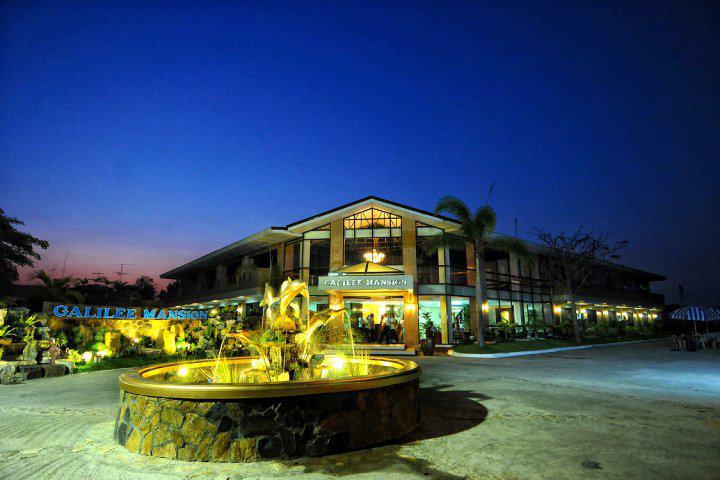What is Minasa Festival?

Source: https://www.hellotravel.com/events/minasa-festival
The Minasa Festival proudly highlights the delectable Minasa Cookies, alongside locally crafted culinary delights, including the crisp and delightful Barquillos. This week-long event is a vibrant showcase of their rich culture and time-honored traditions. During this celebration, an array of food stalls and bustling bazaars are set up, offering a diverse range of products, from clothing and accessories to toys and much more. In January, the residents of Bustos, Bulacan, come together to celebrate the vibrant “Minasa Festival.”
Minasa, the locally-produced variant of the ubiquitous uraro cookies, boasts a distinct, more toasted, and subtly sweet yet elegant flavor that sets it apart from the typical uraro treat. This unique delicacy endears itself to both locals and visitors alike. The Minasa Festival coincides with the celebration of their patron saint, the Holy Child Jesus. This festive occasion features a vibrant street dancing parade in colorful costumes and an array of temporary stalls within the municipal compound, offering local cuisine and merchandise.
A Brief History of the Minasa Festival
Minasa originated during an era when affluent families in Bustos were constructing stone houses. In those times, egg whites were employed as adhesives for joining adobe stones. To avoid wasting egg yolks, resourceful homemakers combined them with butter, milk, and flour derived from the starch of the locally abundant ‘sago’ plant. This creative concoction gave birth to a delectable cookie known as Minasa.
The name Minasa finds its roots in the Tagalog word ‘masa,’ signifying the technique of ‘hand kneading,’ which was used in preparing the dough by pressing and stretching it before baking. During the Spanish colonial period in the Philippines, Minasa held a prestigious status as a delicacy reserved exclusively for the elite and affluent families, as well as their esteemed guests who frequented their homes during festive gatherings and special occasions. It has continued to be a beloved pasalubong (souvenir or gift) and a token of charity and goodwill among friends, upholding the tradition of caridad or charity. Often, a steaming cup of hot chocolate was the favored accompaniment to Minasa.
The knowledge of baking Minasa was eventually disseminated to the middle-class and common citizens of Bustos, likely through helpers and laborers who worked in the affluent households of their employers. As the availability of sago flour dwindled, bakers began substituting it with cassava flour, a more convenient alternative, given that extracting flour from cassava was a much quicker process, taking only four days as opposed to sago’s more time-consuming method.
After achieving the desired consistency through thorough kneading, the dough is flattened onto a wooden mold referred to as a ‘trohel.’ Subsequently, it is cut into rectangular bite-sized pieces using a pastry crimper, imparting distinctive zigzag edges. It’s worth noting that the unique design adorning each Minasa bears a striking resemblance to the ornate engravings found on the walls of the historic Hispanic stone houses in Bustos. This connection leads to the inference that the artisans who contributed to the construction of these homes may have been the pioneers in crafting the trohel molds. These molds could have also featured depictions of the patron saint of the day, reflecting the belief that consuming such religiously-inspired food would bring spiritual nourishment.
The dough is then baked in a wood-fired masonry oven, which traditionally requires several hours to cook. In modern times, however, the use of modern ovens has significantly expedited the cooking process, enabling large-scale production.
The meticulous process of baking Minasa, its origins, and its intricately unique design are a testament to the creativity and artistic flair of the people of Bustos. It truly embodies the spirit of Bustos—a pastry that not only connects with its past but also celebrates the present, uniting people from all walks of life in shaping the town’s future. This is why, on January 16, 2011, the Municipal Government of Bustos inaugurated the Annual Minasa Festival, coinciding with Bustos’ Founding Anniversary every second week of January.
Today, Minasa is no longer a delicacy reserved for the privileged few but a delight that can be enjoyed by the entire community, serving as both a special dessert and a symbol of Bustos’ rich historical heritage.
The Heart of Bustos, Bulacan: Where the Minasa Festival Held

Source: https://commons.wikimedia.org/wiki/File:09064jfBustos_Bulacan_Sentenaryo_Municipal_Hall_Complexfvf_16.jpg
Bustos, formally known as the Municipality of Bustos (in Tagalog: Bayan ng Bustos), is a second-class municipality situated in the province of Bulacan, Philippines. As of the 2020 census, its population stands at 77,199 individuals.
History
During the Spanish Period, Bustos was a constituent part of the town of Baliuag, serving as one of its barrios. A significant turning point occurred around 1860 when a tragic incident unfolded. On a rainy Sunday, a group of Bustos residents, each carrying infants for baptism, were en route to the St. Augustine Parish Church in Baliuag. Tragically, they met with disaster when the planceta or raft they were using inadvertently overturned while crossing the turbulent Angat iver, claiming lives due to the powerful current.
This calamitous event prompted the people of Bustos to seek independence and establish their parish church, thus avoiding dangerous river crossings for community safety. In memory of the infants who perished in the river, the local community selected the Holy Child Jesus (Santo Niño) as their patron saint.
Geography
Bustos enjoys a central location amidst five neighboring towns in Bulacan, with San Rafael to the north, Pandi and Plaridel to the south, Baliuag to the west, and Angat to the east.
The terrain predominantly consists of expansive rice fields dedicated to crop cultivation and agricultural production. Many of these farmlands benefit from the irrigation systems managed by the National Irrigation Administration, drawing water from both the Bustos Dam and the Angat Dam along the Angat River.
In terms of distance, Bustos is situated 29 kilometers (18 miles) away from Malolos and 52 kilometers (32 miles) from Manila.
Activities Occur for the Seven Days Celebration of Minasa Festival
1st Day: Thanksgiving Mass and Opening Ceremony
2nd Day: Zumbayanihan (Fitness and Dance Showdown)
3rd Day: Minasayawan (Tiktok Dance Challenge Contest)
4th Day: Minasa Cake Decorating Contest
5th Day: Minasakwentuhan (Story Telling) & Likhang Makaminasa (Digital Print Ad Contest)
6th Day: Minasa Concert (Famous Band Concert) & Minasa Fireworks Display
7th Day: Tugtog at Sayaw Alay kay Sto. Niño
Note: These Activities occurred in the 2022 Minasa Festival and it may vary every year.
Places You Must Go To in Bustos, Bulacan
1. Sto. Niño Parish, Bustos, Bulacan

Source: https://commons.wikimedia.org/wiki/Category:Santo_Ni%C3%B1o_Church_in_Bustos,_Bulacan
Bustos was originally a part of the town of Baliuag. However, a tragic incident in 1862 prompted the residents of Bustos to seek their own parish in their barrio. At that time, the sole means to reach the Saint Augustine Parish in Baliuag was to cross the Angat River. A group of Bustos natives, accompanied by their infants, attempted this perilous river crossing to attend a baptismal ceremony at Baliuag Church. Tragically, their raft capsized during the crossing due to the strong current, resulting in the drowning of those aboard.
In remembrance of the infants who lost their lives in the river, a parish was subsequently established in Bustos, dedicated to Santo Niño. Bustos officially became a separate town on April 29, 1867. However, during the American period, it once again became part of Baliuag. It wasn’t until 1916 that Bustos regained its status as a distinct municipality. The inaugural parish priest of the Santo Niño de Bustos Parish was Padre Gabriel Alvarez.
2. Bustos Dam Eco Park

Source: https://www.reddit.com/r/RedditPHCyclingClub/comments/yza0tz/pinaglaruan_yung_chessboard_jk_bustos_dam/
Bustos Dam, alternatively referred to as the Angat Afterbay Regulator Dam, is a relatively small irrigation dam situated in Bustos, Bulacan. It’s frequently confused by local residents with Angat Dam due to its close proximity to the neighboring town of Angat. This project is situated within Barangay Tibagan, Bustos, Bulacan, and it serves as a crucial component of the Angat River system.
Constructed in 1926, located 50 kilometers upstream from the Bustos Dam, the Angat Afterbay Regulator Dam, also commonly referred to as Bustos Dam, stands as the longest rubber dam in Asia, spanning an impressive 79 meters and ranking as the world’s second-largest. Positioned at coordinates 14°57’25″N 120°57’15″E, it provides vital water regulation services to nearby cities, including Real, Quezon, Rodriguez (Montalban), Rizal, and Antipolo City, Rizal.
3. The Bustos Heritage Park

Source: https://www.trip.com/travel-guide/attraction/bustos/bustos-heritage-park-62072631/
The Bustos Heritage Park features a distinctive lettering display that showcases the town’s name in the Letras y Figuras tradition. This artistic style, made famous by 19th-century painter Jose Honorato Lozano, exemplifies the fusion of intricate figures and landscapes to create letterforms. In the Letras y Figuras display in Bustos, traditional shapes reminiscent of the locally baked biscuits known as minasa and the intricate carvings found on the ancestral houses throughout the town are prominently featured, creating a unique visual connection to the town’s cultural heritage.
4. The Mercado Ancestral House

Source: https://commons.wikimedia.org/wiki/File:0265jfLandscapes_Perez_Mercado_Houses_Road_Bustos_Bulacanfvf_29.JPG
The Mercado Ancestral House is a captivating piece of history in Bustos. As we strolled further amidst the rows of ancestral homes, we encountered the iconic bahay-na-bato structures that initially caught my eye while speeding by in a car. Walking allowed us to truly immerse ourselves in the allure of these Spanish-era houses. Although many of them bear the marks of time and decay, there are gems like the impeccably preserved Perez Ancestral House, which has been transformed into a charming café. Right next to it stands the renowned Mercado House, the birthplace of the Modernist artist Conrado Mercado.
Constructed in the mid-19th century, the Mercado Ancestral House is a heritage landmark renowned for its distinctive features. Notably, it boasts Baroque stone carvings adorned with floral garlands, balusters, and a crucifix—a testament to its protective symbolism against malevolent forces.
5. Galilee Mansion and Garden Resort

Source: http://bulacanresortsandhotels.com/galilee-mansion-and-garden-resort/
The Galilee Mansion and Garden Resort is nestled within a sprawling 3-hectare expanse, and it officially opened its doors in March of 2004. It embarked on its journey with just three swimming pools, affectionately named the “Ark of the Covenant” (for kids), “Jordan River,” and the “Pools of Siloam,” which features a Jacuzzi pool. The “Gethsemane Hall” originally served as a place for conducting religious services but has since evolved into a multi-purpose function hall. Over the years, the resort has undergone significant enhancements and expansion.
Presently, Galilee Mansion and Garden Resort offers a wide array of amenities, including various swimming pools, air-conditioned rooms, lush gardens, versatile function halls, and a spa center. This diverse range of facilities makes it one of the most vibrant and sought-after resorts in Bustos, Bulacan, ideal for hosting special occasions. Notably, this resort, which seamlessly blends elements of spirituality into its theme, has gained recognition for its ongoing commitment to improvement and excellence.
Reasons Why You Should Go To Minasa Festival
The Minasa Festival in Bustos, Bulacan is an absolute must-visit for anyone seeking an authentic and culturally enriching experience in the Philippines. Here are compelling reasons why you should mark your calendar for this vibrant celebration:
1. Cultural Immersion: The Minasa Festival is a vibrant showcase of Bustos’ rich culture and time-honored traditions. It offers a unique opportunity to immerse yourself in Filipino heritage and witness the local way of life.
2. Culinary Delights: Indulge in the delectable Minasa Cookies, a local delicacy with a distinct, toasted flavor that sets it apart. Taste the essence of Bustos through these cookies and other locally crafted culinary delights like Barquillos.
3. Festive Atmosphere: The festival’s week-long celebration brings the streets of Bustos to life with colorful street dancing parades, vibrant costumes, and lively music. The atmosphere is filled with joy and excitement, making it an unforgettable experience.
4. Local Shopping: Explore bustling food stalls and bazaars offering a diverse range of products, from clothing and accessories to toys and more. It’s an excellent opportunity to shop for unique souvenirs and gifts.
5. Historical Significance: The Minasa Festival is deeply rooted in Bustos’ history, with origins dating back to the Spanish colonial period. Discover the heritage and traditions that have shaped this charming town.
6. Community Spirit: Join in the festivities and witness the strong sense of community in Bustos. The festival is a time for unity, shared joy, and cultural pride, making you feel like a part of the local family.
7. Fun Activities: From dance showdowns and cake decorating contests to storytelling sessions and concerts, the Minasa Festival offers a wide range of activities for all ages. There’s never a dull moment during this celebration.
8. Spiritual Connection: The festival coincides with the feast of the Holy Child Jesus, the town’s patron saint. It’s an opportunity to experience the spiritual side of Filipino culture and witness heartfelt devotion.
9. Beautiful Setting: Bustos, located amidst picturesque rice fields and near the Bustos Dam, provides a charming backdrop for the festival. Explore the natural beauty of the area while attending the festivities.
10. Memorable Experience: Whether you’re a traveler seeking cultural immersion or a local looking for a fun-filled week, the Minasa Festival promises an unforgettable experience filled with joy, delicious food, and a deep sense of connection to the heart of Bustos, Bulacan.
Don’t miss the chance to be a part of this lively celebration that captures the essence of Filipino culture and hospitality. The Minasa Festival is an experience that will leave you with cherished memories and a deeper appreciation for the beauty of Bustos, Bulacan.


